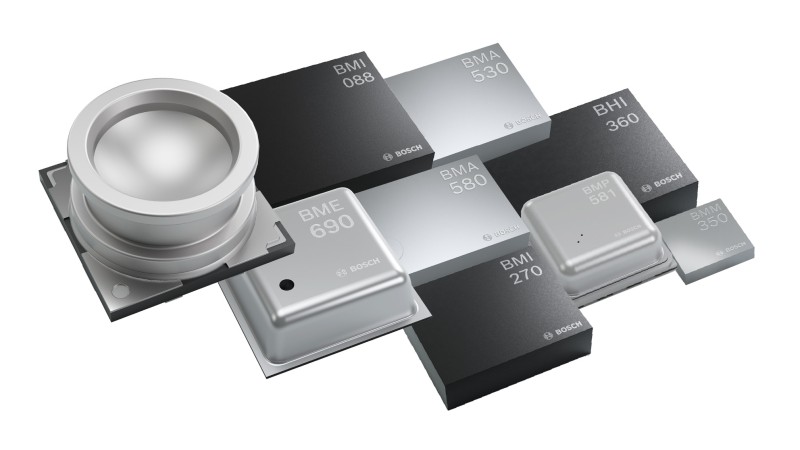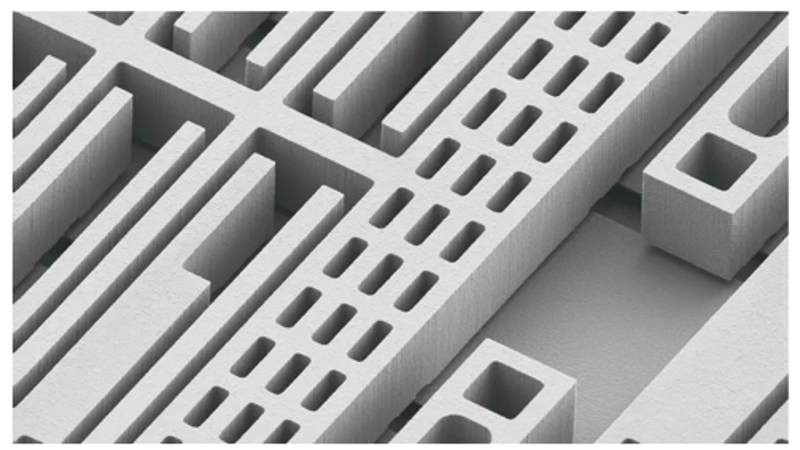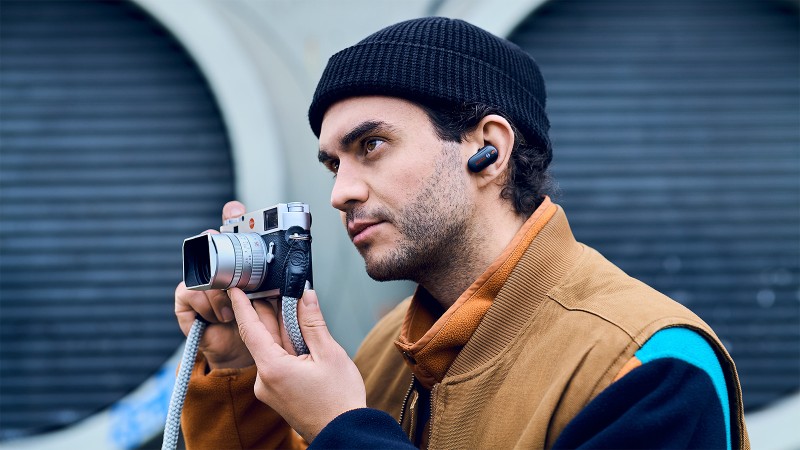All about MEMS sensors
Microelectromechanical systems - small solutions with a huge impact

Sensing solutions based on microelectromechanical systems (MEMS) are smaller than the head of a pin, yet they play a fundamental role in our modern lives and influence the way of our future life. Bosch is one of the world's leading suppliers of MEMS sensors in the automotive and consumer electronics industry. We at Bosch Sensortec offer cutting-edge sensing solutions for consumer electronics such as smartphones, wearables, hearables and many more applications. Learn more about MEMS sensors.
What are MEMS sensors?
MEMS sensors are tiny microelectromechanical systems that can detect mechanical, magnetic or even chemical changes and convert them into electrical information. Depending on their construction, MEMS sensors can measure pressure, motion, acceleration, temperature or even gas and enable important functions in consumer electronics devices such as image stabilization or screen orientation in smartphones, position and fitness tracking in wearables and hearables or air quality monitoring in smart home applications. MEMS sensors are valued for their small size, low power consumption and high accuracy.

Where can MEMS sensors be found?
MEMS sensors are used in a variety of industries and applications. In consumer electronic devices, MEMS sensors are implemented in smartphones, tablets, wearables, hearables, laptops, drones, robots, smart home as well as in gaming and AR/VR applications. The tiny sensors have the capability to facilitate crucial functions, such as minimizing the power consumption of smartphones or tablets. In smartwatches, they possess the ability to identify various activities such as standing still, walking, running, cycling, swimming, and numerous other actions. Integrated in hearables, MEMS sensors play an important role in enabling seamless device control through detecting touch and tap actions on the device. These were just a few examples - the potential applications of MEMS sensors in consumer electronics devices are wide-ranging. Besides consumer electronics devices, MEMS sensors can be found in many other applications, from the automotive industry to medical technology.
-

Sensing solutions are in devices you hold in your hands every day, such as smartphones, where they enable a variety of tasks such as image stabilization or power management. -

MEMS sensors in hearables enable various use cases such as power management, multi-tap detection or head tracking for 3D audio experience. Latest MEMS sensors enable advanced voice processing and voice activity detection. -

With self-learning and personalizable features, MEMS sensors in wearables enable many device functionalities such as fitness activity learning, position tracking and activity recognition. -

Through MEMS sensors you have a real life experience while using AR/VR glasses and headsets by enabling real-time motion detection, tracking head movements, and eliminating image deviations. -

MEMS sensors in laptops and tablets can capture ambient data such as motion and oritentation of the device and allow to adjust the screen orientation and many more. In addition they can detect freefall events for data protection and warranty cases. -

Our sensing solutions are also in robots or drones. They stabilize the drone's altitude, enable orientation and flight control. In robotic vacuum cleaner, the robot can detect the boundaries of a given area, and dynamically plan a cleaning path by mapping spaces. -

MEMS sensors in gaming and tv applications provide the opportunities for a richer entertainment experience by enabling real-time movement and precise navigation through motion control, orientation, balancing and gesture recognition. -

The tiny helpers in smart home applications can measure air quality and humidity. Furthermore, they enable automatic wake-up and sleep mode and therefore, ensure that the devices have long power.
What are MEMS sensors made of?
MEMS sensors are a combination of electronic and mechanical hardware. Having a look inside a MEMS sensor to discover its elements, a MEMS sensor contains of a MEMS element packed in a semiconductor housing (e.g., LGA) together with an evaluation circuit – the ASIC (application-specific integrated circuit). Zooming further into the MEMS element, some components of the smallest MEMS sensors are just four microns in size – smaller than a human hair.
4 micrometers
measure some of the components inside the smallest MEMS sensors. That is ten times smaller than an ant's leg.
How do MEMS sensors operate?

MEMS sensors convert a physical or environmental stimulus into an electrical signal, which can then be measured or analyzed. This is achieved through the usage of tiny mechanical structures and electrical circuits integrated onto a single chip. An acceleration sensor, for example, consists of a set of tiny springs that interlock in the shape of combs and are attached to a silicon chip. In the event of a change in movement, the combs are shifted against each other. The alteration in finger spacing leads to a modification in electrical voltage. This modification is measured and transformed into an electrical signal, which is then transmitted by the sensor.
How did Bosch MEMS sensors evolve?
Bosch has influenced the development of MEMS sensors more than any other company. As a pioneer in MEMS solutions, Bosch developed the manufacturing process behind MEMS technology in 1994 that still forms the basis of today’s sensor production runs. Since then, we have continuously broadened our technical expertise in sensing solutions and our application know-how. Sensing solutions are becoming smarter through artificial intelligence, even more accurate or even smaller, in order to be optimally integrated into the end applications.

Where are Bosch MEMS sensors manufactured?

In 1995, the start of large-scale production at Bosch was laid as the foundation for this modern technology. Bosch is a pioneer and the world's leading supplier of MEMS sensors in the automotive and consumer electronics industry. Bosch designs and manufactures MEMS sensors 100 percent in-house. All MEMS sensors are manufactured in Reutlingen and Dresden, Germany. The MEMS sensor manufacturing process takes more than three months and entails several hundred steps. These tiny sensors are manufactured under exacting cleanroom conditions, as even the smallest airborne particles would disrupt the delicate sensor production. One cubic foot of air – about 30 liters – may contain no more than one particle weighing half a microgram. Our 100-percent in-house MEMS sensor production thus allows us to adhere to our high standards of quality and sustainability.
More than four million MEMS sensors
are produced by Bosch every day for mobility solutions and consumer electronics.



































